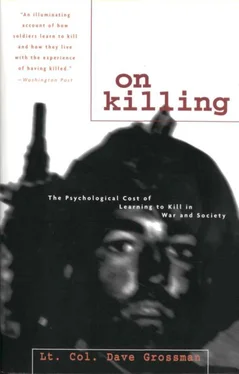The fact that the crime victim survey reflected a significant increase in violent crime in the same year that the FBI reported a small decrease supports a school of thought which holds that the FBI report has also been increasingly underreporting crime. This theory holds that law-enforcement agencies will become more and more swamped as the incidence of violent crime increases. As a result of this, both an exhausted police force and a jaded population (which is also increasingly fearful of criminal retribution) will raise the threshold of what is reported. There is evidence to indicate that in many high-crime areas attacks and assaults that would have received immediate attention thirty years ago (for example, drive-by shootings in which no one is hit and beatings in which no one is killed) are routinely ignored today.
As the inner cities continue to sink into lawlessness and anarchy it may well be that an increasing proportion of violent crimes will continue to go unreported and unnoticed. As a result of this, both crime reports will increasingly fail to reflect the full magnitude of the problem of violent crime in America.
Another common red herring in this area involves the increasing “deadliness” of modern small arms. This is simply a myth.
For example, the high-velocity, small-caliber (5.56 mm/.223 caliber) ammunition used in most assault rifles today (e.g., the M16, AR-15, Mini-14, etc.) was designed to wound rather than kill. The theory is that wounding an enemy soldier is better than killing him because a wounded soldier eliminates three people: the wounded man and two others to evacuate him. These weapons do inflict great (wounding) trauma, but they are illegal for hunting deer in most states due to their ineffectiveness at quickly and effectively killing game.
Similarly, since World War II the weapon that we associated with criminals was generally a .45 automatic, which was also the current military side arm. In recent years the criminal weapon of choice has reflected the military’s transition to the 9 mm pistol, which has a smaller, faster round, which many experts argue is considerably less effective at killing.
What these new smaller ammunitions (5.56 mm for rifle and 9 mm for pistol) do make possible is greater magazine capacity, and this has increased the effectiveness of weapons in one way, while decreasing it in another way.
The point is that there has not been any significant increase in the effectiveness of the weapons available today. The shotgun is still the single most effective weapon for killing someone at close range, and it has been available and basically unchanged for more than one hundred years. Medical technology, computer technology, and entertainment technology have all advanced at quantum rates, but the technology of close-range killing has been essentially unchanged throughout the last century.
But the situation is more complex. Correlation does not prove causation. To prove that TV causes violence you must conduct a controlled, double-blind experiment in which, if you are successful, you will cause people to commit murder. Clearly to perform such an experiment with human beings is unethical and largely impossible. This same situation is the foundation for the tobacco industry’s continued argument that no one has ever “proven” that cigarettes “cause” cancer.
There comes a point when, in spite of this type of reasoning, we must accept that cigarettes do cause cancer. Similarly, there comes a point at which we must accept the verdict of 217 correlation studies.







